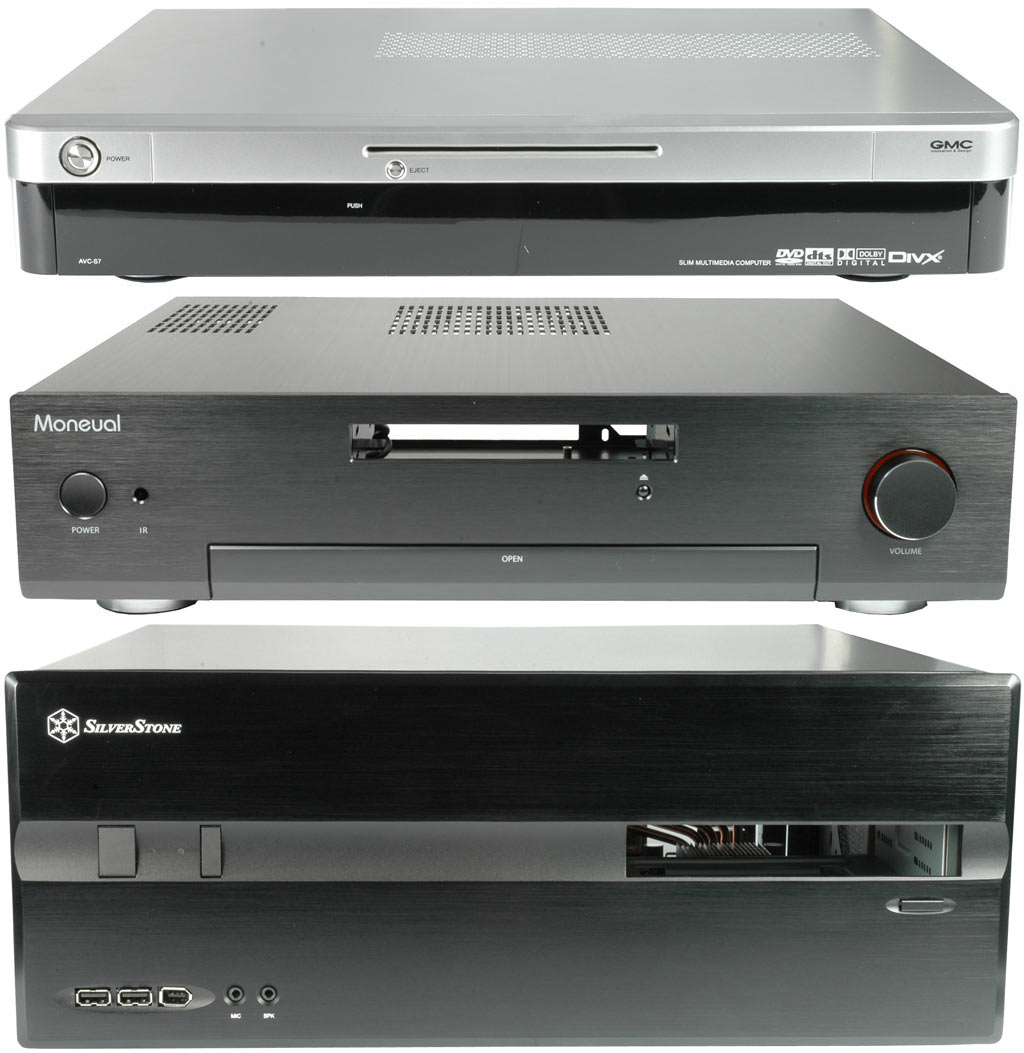Three Mainstream Home Theater PC Cases Compared
Mainstream Home Theater PC Housings
The good old whitebox PC that many of us associate with boring beige boxes has almost disappeared from retail markets. Although business-class systems remain rather simple devices, the consumer market is now fragmented and colorful. Fancy gaming systems and powerful overclocking PCs for enthusiasts are available with or without in-your-face designs and mods. Traditional home PCs are being replaced by more space-efficient notebooks.
However, two additional PC types are conquering the living room: small, low-cost nettop PCs and HTPCs (home theater PCs), which offer all the functionality of a standard PC, but feature additional enhancements for living room-type applications. This extra functionality, combined with the aesthetic demands of a very public, visible environment, demands a very special housing.
HTPC Hardware
In all actuality, most PCs can serve as an HTPC, but there are several points that require careful consideration.
First, you want to be sure that the system is powerful enough to play and record all audio and video sources, including full bit rate high-def streams. Modern integrated graphics solutions, such as AMD’s 780/785G with Radeon HD 3200/4200 graphics, Intel’s G45 with GMA X4500HD, and the Nvidia GeForce 9300/9400, are all capable of handling MPEG-2, VC-1, and H.264 when paired with a decent processor.
However, HD video playback doesn’t stop with handling audio and video. Playback also requires decryption, which requires computing power. We want a processor that can handle everything. Hence, we recommend a 2.5 GHz dual-core CPU or better. Two gigabytes of RAM should be sufficient, but more sure doesn’t hurt for Windows 7 or Vista running Media Center.
Enthusiasts will want to pay more attention to the platform nuances. Only Intel and Nvidia support 8-channel LPCM audio via HDMI through their integrated graphics solutions, which is necessary if you want to decode DTS-HD or Dolby TrueHD 7.1 audio on the PC and then send 16-bit, 48 kHz sound to your receiver.
Get Tom's Hardware's best news and in-depth reviews, straight to your inbox.
Currently, there are also a couple of options for bitstreaming those high-def audio formats, too. You could use a discrete audio card, such as Asus’s Xonar HDAV 1.3,. Or, you could go with a video card like AMD's Radeon HD 5870, which has a protected audio path and now requires software support from companies like CyberLink and Arcsoft.
HTPC Cases
Finally, there’s the HTPC case, which plays a role in defining the power supply, remote control, form factor, cooling options, and visual appearance you achieve here. Some HTPC cases come with integrated touchscreen displays. Others feature a small vacuum fluorescent display (VFD), or no display at all. There are full-height and slim designs, full ATX and microATX. This article looks at four mainstream HTPC cases by GMC, Moneual, and Silverstone in the price range of up to $360.
